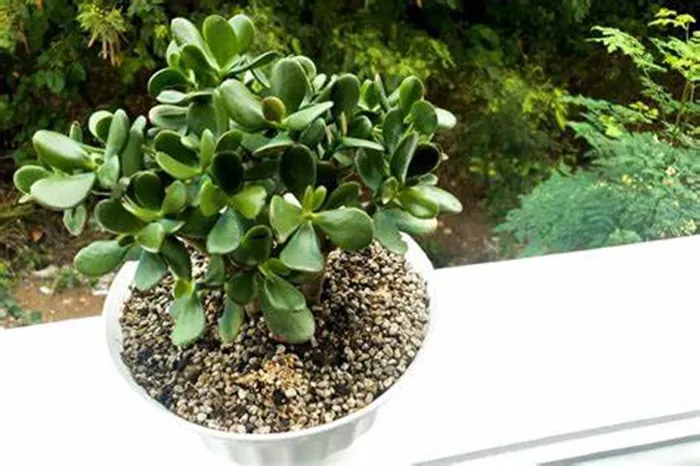Jade bonsai, with its lush green leaves and compact form, is a beloved addition to any garden or home. The key to a thriving jade bonsai lies in the soil. Choosing the right soil is essential for the health and longevity of this beautiful plant. In this article, we will explore the ideal soil composition, factors to consider, and tips for maintaining optimal soil conditions for your jade bonsai.
Understanding Jade Bonsai Soil Requirements
The Importance of Soil Composition
Jade bonsai, like many succulents, thrives in well-draining soil. The soil should be porous enough to allow excess water to drain away quickly, preventing root rot. A well-balanced soil mix ensures that the plant receives the necessary nutrients while maintaining a healthy root system. The ideal soil for jade bonsai typically consists of a blend of organic and inorganic materials.
Key Components of Jade Bonsai Soil
Organic Matter
Organic matter such as peat moss or compost is crucial for providing essential nutrients and improving soil structure. It helps retain moisture while also promoting aeration. Peat moss, in particular, is highly absorbent and can hold several times its weight in water, ensuring that the soil remains moist without becoming waterlogged.
Inorganic Materials
Inorganic components like perlite, pumice, or coarse sand are vital for enhancing drainage. These materials create air pockets within the soil, allowing roots to breathe and preventing water from pooling around the base of the plant. Perlite, for example, is lightweight and porous, making it an excellent addition to jade bonsai soil.
Creating the Perfect Soil Mix
Recommended Soil Ratios
A balanced soil mix for jade bonsai typically includes equal parts of organic matter and inorganic materials. For instance, a mix of one part peat moss, one part perlite, and one part coarse sand is often recommended. This combination ensures that the soil is well-draining while still retaining enough moisture for the plant’s needs.
Customizing Soil for Your Climate
The ideal soil composition may vary slightly depending on your local climate. In regions with high humidity, you may need to increase the proportion of inorganic materials to improve drainage further. Conversely, in arid climates, adding a bit more organic matter can help retain moisture. Observing how your jade bonsai responds to different soil mixtures will help you fine-tune the ideal blend for your specific environment.
Factors to Consider When Choosing Soil
Soil pH
Jade bonsai prefers slightly acidic to neutral soil, with a pH range of 6.0 to 7.0. It is essential to test your soil’s pH level periodically to ensure it remains within this range. If the soil is too acidic or alkaline, it can affect nutrient availability and hinder the plant’s growth. You can adjust the pH by adding lime to raise it or sulfur to lower it.
Nutrient Content
While jade bonsai is not a heavy feeder, it still requires essential nutrients to thrive. A soil mix enriched with organic matter provides a slow-release source of nutrients. Additionally, you can supplement the soil with a balanced, slow-release fertilizer during the growing season to ensure your jade bonsai receives all the necessary elements for healthy growth.
Soil Texture and Aeration
The texture of the soil is crucial for root health. A well-aerated soil mix allows roots to penetrate easily and access oxygen. Compacted soil can restrict root growth and lead to poor plant health. To improve aeration, avoid overwatering and ensure the soil components are well-mixed. Adding materials like perlite or vermiculite can also enhance soil texture and promote healthy root development.
Maintaining Soil Health for Your Jade Bonsai
Watering Techniques
Proper watering is essential for maintaining healthy soil conditions. Jade bonsai should be watered thoroughly, allowing the excess water to drain out of the pot. Overwatering can lead to waterlogged soil and root rot, while underwatering can cause the plant to become dehydrated. It is best to wait until the top inch of soil is dry before watering again. This ensures that the soil remains moist but not saturated.
Repotting and Soil Refreshing
Repotting your jade bonsai every two to three years is recommended to refresh the soil and provide more room for root growth. When repotting, gently remove the plant from its current container and trim any damaged or overgrown roots. Replace the old soil with a fresh mix to ensure your jade bonsai continues to thrive in optimal conditions.
Monitoring Soil Conditions
Regularly inspecting the soil and plant can help you identify any issues early. Look for signs of overwatering, such as yellowing leaves or a foul smell from the soil. If you notice these symptoms, adjust your watering schedule and consider repotting the plant with fresh soil. Additionally, keep an eye out for pests that may affect the health of your jade bonsai and its soil.
Conclusion
Choosing the right soil is fundamental to the success of your jade bonsai. A well-draining mix with a balance of organic and inorganic materials provides the ideal environment for healthy growth. By understanding the specific needs of your jade bonsai and adjusting the soil composition accordingly, you can ensure that your plant thrives for years to come. With proper care and attention, your jade bonsai will be a beautiful and rewarding addition to your garden or home.


